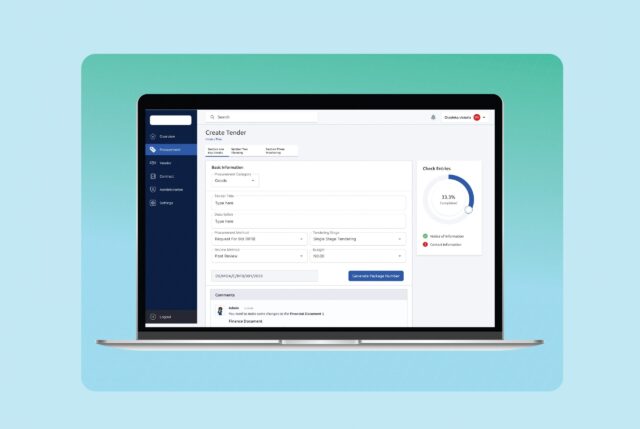Avoid These Critical Pitfalls: Costly Mistakes That Derail E-procurement Software Selection
One of the most crucial technological choices a business makes during its digital transformation process is choosing the appropriate eprocurement software.
However, there are numerous expensive mistakes towards the successful implementation, which can convert a profitable investment into a wasteful disappointment.
A lot of companies make impulsive software selections, are blinded by impressive demos, or single out critical elements that influence how well a software performs in the long term.
The results of such mistakes include cost blowouts of the budgets, failure to meet deadlines, low user adoption rates, and systems that do not give the desired value.
With the knowledge of drawbacks and pitfalls to avoid, your business can therefore utilize the information contained therein to make informed decisions, resulting in quality procurement and measurable business.
Rushing Into Decisions Without Thorough Planning

The enthusiasm for updating procurement processes frequently causes businesses to choose software hastily without sufficient planning or strategic consideration.
Businesses usually omit crucial planning stages, neglecting to identify particular pain points, describe existing procedures, or set up explicit success measures for the new system.
This hasty approach causes software to be chosen that meets perceived demands rather than real ones, which produces unsatisfactory results and costly fixes down the road.
Thorough requirements assessments, process mapping, departmental stakeholder engagement, and realistic implementation timetable development are all components of proper planning.
Businesses that take the time to prepare carefully lay the groundwork for software deployments that are effective and provide long-term benefits.
Ignoring End-User Needs and Preferences
Many eprocurement software selection committees ignore the demands of the staff members who will use the system on a daily basis in favor of concentrating only on technical specifications and management requirements.
Because of this oversight, complex systems that scare users are frequently chosen, which leads to low adoption rates and a persistent reliance on manual operations.
End users have important knowledge about the workflow issues, favored user interfaces, and useful feature needs that affect the success of software.
During the selection process, intelligent firms invite the participation of representatives of all the different groups of users in order to seek feedback on their ease of use, training needs, and feature preferences.
When prioritizing the user experience, the specified guarantee will ensure that the adoption levels rise, training costs will decrease, and the overall satisfaction rates with the chosen solution will be higher.
Overlooking Critical Integration Requirements

In order to preserve operational accuracy and efficiency, modern organizations depend on networked systems that must exchange data effortlessly.
Choosing eprocurement software without carefully assessing integration capabilities with current supplier databases, accounting software, and enterprise resource planning systems is a typical error.
Data silos, manual data input, duplicate records, and inconsistent information across business units are all results of poor integration.
Businesses frequently misjudge the difficulty and expense of bespoke integrations, learning about these issues only after purchasing software.
In order to guarantee seamless data flow between all business systems, successful firms evaluate available connectors, application programming interfaces, and middleware solutions early in the selection process.
Falling for Impressive Demos Without Real Testing
Software providers are experts at producing captivating demos that highlight their platforms in the best possible way, frequently by hiding real-world constraints with staged situations.
Without carrying out extensive testing in real-world business settings, organizations usually base their selection judgments on these well-crafted presentations.
When the program is unable to manage intricate workflows, large transaction volumes, or certain organizational needs, this error causes unpleasant shocks during deployment.
The smart buyer now desires long-term testing periods, pilot projects, or proof-of-concept implementations so that the purchase to pay software can be tried with real data and real users.
This is a very practical method of evaluation that ensures that the solution perceived has met organizational objectives in reality and raises any issues at an early stage.
Underestimating Hidden Implementation and Ongoing Costs

For eprocurement software, the initial software licensing charge is just a small portion of the overall cost of ownership.
Organizations often make their variable choices of selection based solely on initial prices without factoring in installation costs, training costs, the requirement for changes, and ongoing maintenance costs.
Indicators of hidden costs include data transfer, integration of the system, training of the users, change management, tech support, and formal software updates.
These additional expenditures may generate executive discontent and cause a financial crunch in the budget, which may further increase by two or three times the original investment.
To allow accurate budgetary planning and viable calculation of returns on investment, clever companies will request total cost breakdowns, including all the estimated costs over the anticipated lifetime of the software.
Neglecting Vendor Stability and Long-Term Viability
Selecting eprocurement software necessitates forming a long-term relationship with the vendor; therefore, their market position and financial stability are important considerations.
Sometimes, companies ignore vendor health metrics like financial performance, customer retention rates, and market share trends in favor of concentrating just on the software’s present capabilities.
Due to this oversight, solutions may be chosen from faltering businesses that could have to stop producing their goods, lower the quality of their service, or be acquired by rivals.
The risks of inheriting tendencies towards the instability of the vendors are forced migrations, software abandonment, and reduced customer service.
A thorough vendor review should include financial analysis, client referrals that have used the company’s services over a long period of time, and evaluation of strategic plans of a company and commitment to the eprocurement software business.
Choosing Features Over Core Functionality

The attraction of sophisticated features and state-of-the-art capabilities frequently diverts businesses from assessing how well software manages core procurement tasks.
Businesses usually ignore gaps in critical capabilities like supplier management, approval procedures, and purchase order processing in favor of appealing but seldom-used features.
The approach of a shift in focus due to this feature results in the choices of platforms, which have good skills in specific areas yet fail in basic functions that act as pillars to the daily procurement processes.
An effective purchase to pay software selection exercise should have the delicate balance of innovative functions and simplicity of core functionality in that the application chosen gives good performance of basic functions and room for growth through highly complex functions.
Essential capabilities ought to be of priority at the expense of optional improvements within organizations.
Conclusion
The chance of choosing eprocurement software or purchase to pay software that promotes organizational performance and provides long-term value is significantly increased by avoiding these typical blunders.
Each trap offers insightful advice for next implementations based on lessons discovered by companies that made expensive selection mistakes.
Effective purchase to pay software selection requires meticulous preparation, in-depth analysis, and careful consideration of both short-term requirements and long-term strategic objectives.






















































